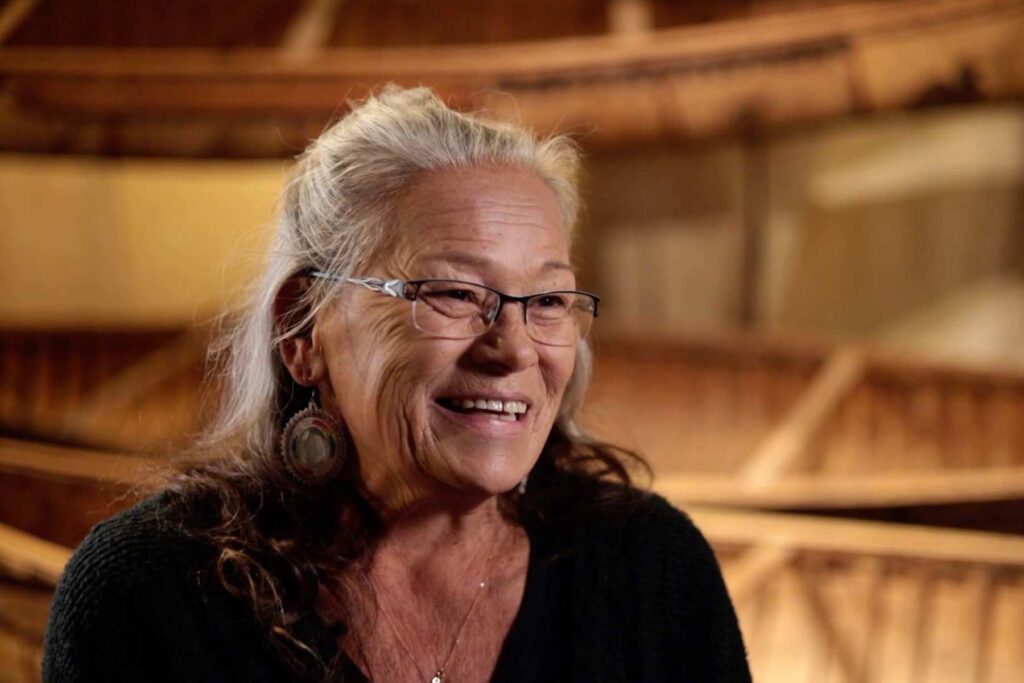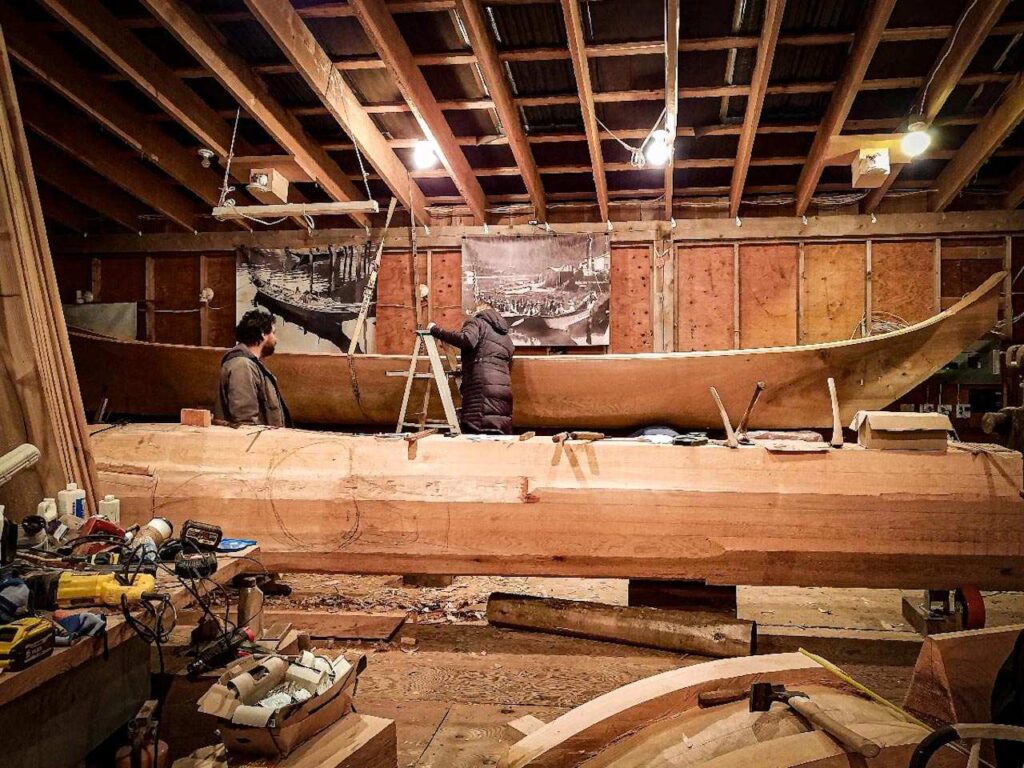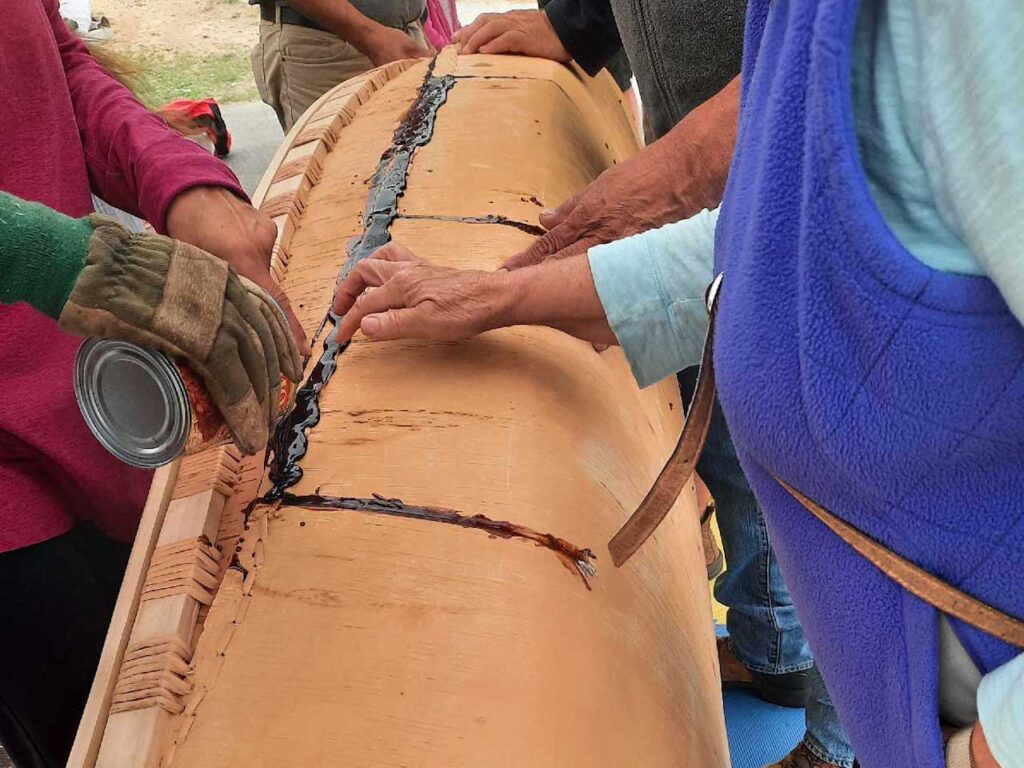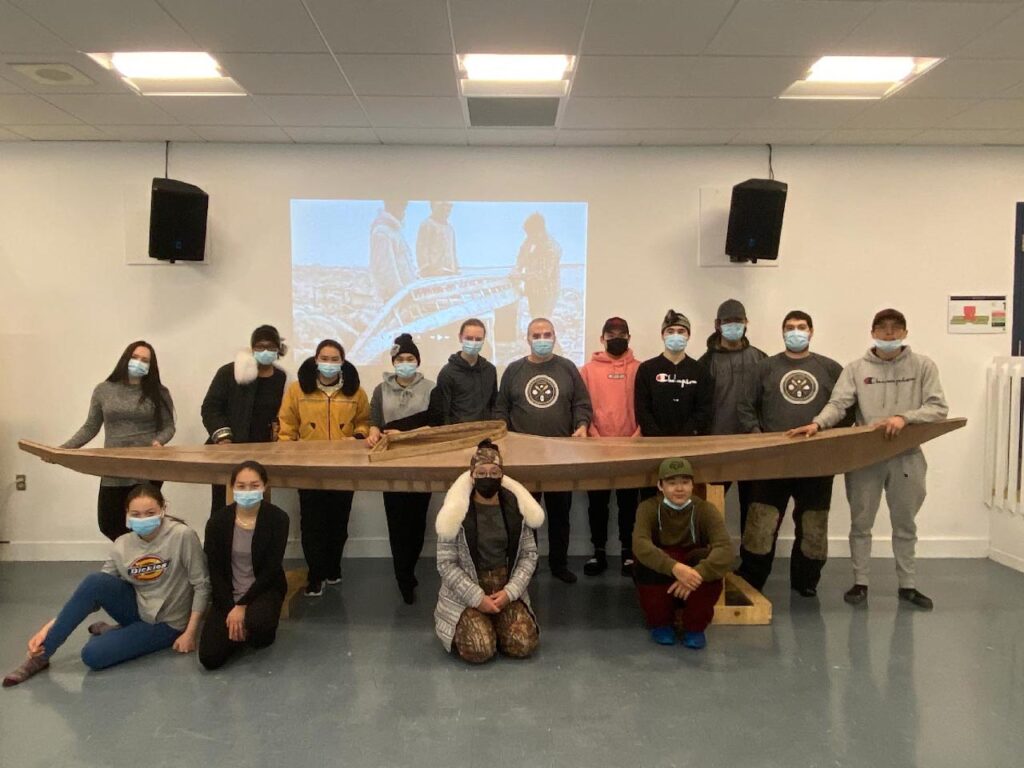Today, September 30th is National Day for Truth and Reconciliation and Orange Shirt Day here in Canada. This day honours all the First Nation, Metis, and Inuit children who were taken from their homes and forced to attend residential schools – the survivors and those who sadly never made it back home. It is a day to learn, reflect, and, most importantly, commit to taking action on the 94 Calls to Action from the Truth and Reconciliation Report.
As an organization that stewards the world’s largest & most significant collection of canoes, kayaks & paddled watercraft, we have committed to honouring and sharing the cultural histories and stories within the collection in all that we do.
Through our relationships with Indigenous Peoples, learning from them, and involving them in collection care and interpretation, The Canadian Canoe Museum has been reflecting on the connections between residential schools and the Indigenous watercraft in the collection. We have asked ourselves how, as a museum, we can move further towards truth and reconciliation.
Today, we are taking the opportunity to share with you, our community, these reflections, commitments, and actions so that we can continue to be accountable as we learn and move forward together. We invite you to join us on this journey – at the end of this post, you will find some resources that will help you learn, reflect, listen, and take action yourself.
What is the connection between canoes and residential schools?
The Canadian Canoe Museum is still learning about the connections between canoes and residential schools. With residential schools operating from the 1870s to 1996 in Canada, we can expect that the makers and communities of origin for every Indigenous canoe or kayak in the collection have been affected, in one way or another, by residential schools and their ongoing intergenerational effects.
We know that in some communities, children were taken from their families and transported to residential schools by canoe. More widely, residential schools, through their assimilative policies, prevented canoe-building knowledge from being passed from one generation to the next.
One of The Canadian Canoe Museum’s mentors, Chuck Commanda, Algonquin birchbark canoe builder, explains:
“A lot of our people, I’d say maybe 70 or 80% of our people have lost this tradition. A big chunk of it had to do with the residential school era that we went through. Although we didn’t experience it ourselves, we are part of the domino effect, meaning that whatever our parents suffered got passed on to us.
I remember as a young boy leaving home for the first time to go to elementary school. I was ridiculed, I was teased about the colour of my skin, beat up in some cases. That just made me not want to be Native. A lot of our people were like that; therefore, we went away from this.
So slowly we’ve begun healing, healing ourselves, healing the communities, and now, all of a sudden, the birchbark canoe has become an object of renewal, reconciliation, forgiveness, pride.”
(Ontario Parks, “Algonquin birchbark canoe build at Murphys Point”, 2022).
Despite the disruption caused by residential schools, canoe building is a form of traditional knowledge that has survived and become a form of healing for Indigenous communities.
How is The Canadian Canoe Museum taking action and moving towards truth and reconciliation with Indigenous Peoples and communities?
The Museum has a long history of collaboration with First Peoples, Métis and Inuit individuals, communities and organizations. For more than 20 years, we have consulted with Indigenous Peoples on our permanent exhibition, documentation and care of the collection, and educational programming. Since 2016, we have formalized our commitments through policy, board recruitment, our National Council, and our strategic plan.
With the establishment of the Museum’s Collaborative Relations program in 2018 to support relationship-building between the Museum and Indigenous communities, The Canadian Canoe Museum began to further expand its work with Indigenous Peoples.
As we create the new museum building and exhibits, The Canadian Canoe Museum is conscious that this moment is a tremendous opportunity to continue and deepen this work. We are including Indigenous perspectives, knowledge, voices and languages in the exhibitions in order to care for and interpret collections to the public. Our goal is to ensure that the Museum has strong relationships with Indigenous knowledge-holders, watercraft builders, and communities and provides a space through exhibitions, programs, and the building itself for dialogue and new understandings informed by a multitude of voices, perspectives, and experiences.
Some of the ways we are doing this in the new museum:
- The project team has worked to ensure that smudging, an important cultural and spiritual practice for Indigenous communities, will be possible anywhere in the building – this is a first for Canadian museum design!
- An Indigenous-led and owned environmental firm advised the CCM on the development of the landscape plan.
- Exterior and interior signage will be trilingual and feature Michi Saagiig Anishnaabemowin alongside English and French (part of the Indigenous Languages Program supported by TD Bank Group).
- At the main entrance, there will be a gathering space outside to provide a welcoming space and acknowledgement of the Museum’s location within Michi Saagiig territory and our relations with local Indigenous communities.
- The BMO Financial Group Research and Knowledge Centre will feature a Library and Research Room, which will help facilitate the recording of oral stories.

Some of the ways we are incorporating these goals and commitments into the design and development process:
- The Museum has hired an early-career Indigenous Exhibits Project Coordinator, MaryJane Proulx, who is involved in all core aspects of exhibit development work, including collaborative relations and managing data for the detailed concept and design process.
- Community Coordinators have been hired in 6 Indigenous nations so far to bring together knowledge, voices, interviews and other material and to consider how Indigenous languages might be included in the exhibits. These nations are Haida, Nuu-chah-Nulth, Michi Saagiig (Curve Lake First Nation, Hiawatha First Nation), Labradormiut and Mi’kmaq.

- We have asked each community to consider and share with us their needs, and The Canadian Canoe Museum is working with them to support those. For instance, when we asked Gisele Martin, Nuu-chah-nulth Community Coordinator (and the daughter of renowned canoe carver Joe Martin), how working with us could benefit her nation, Gisele said that although she is one of the youngest fluent speakers, she fears for the day that her mentors are gone, and she is unable to translate a word or a phrase. The Museum sponsored time for Gisele with her language mentor to focus on Nuu-chah-nulth canoe knowledge, canoeing protocols and ocean-going knowledge—in Nuu-chah-nulth and English. Gisele recorded the conversations on video for future use.
- Interviews and videos done by community coordinators can be co-archived with local repositories for community access. Our informed consent form used for interviews is based on OCAP principles and respects Indigenous concerns about ownership, control, access and possession of knowledge.

- The Canadian Canoe Museum is also reaching out to individuals in some two dozen Indigenous communities across Turtle Island to request interviews, photographs, and quotes regarding watercraft which will be featured in the new exhibits. These contacts will be the seeds of longer-term relationship development and future projects.
- The Canadian Canoe Museum offers traditional care to the collections: local First Nations knowledge-holders smudge and feast collections regularly, and the new site was smudged and prepared before construction began. The Museum involves local Elders and knowledge-holders on its Board and maintains strong ongoing relationships with Hiawatha and Curve Lake First Nations through regular contact, ensuring Indigenous guidance.
- Indigenous People will speak directly to visitors in the new exhibits through personal stories (text quotes), audio and video. We are including Indigenous languages with translations into English and French where speakers wish this.
- New watercraft have been commissioned for the new exhibits to support cross-generational knowledge transfer within Indigenous communities:
- High school students in Puvirnituq, QC, made a local-style qajaq (kayak) for The Canadian Canoe Museum in early 2022. Working with skilled teacher Alain Cloutier and supported by historic photos of the last kayak built in Puvirnituq, the students were able, for the first time in decades, to make a qajaq based on local design rather than the more commonly-used Greenland design.

- Mi’kmaq builders Todd Labrador and his daughter Melissa Labrador have been commissioned to create a 21-foot ocean-going birchbark canoe with a sail to help document the deep knowledge of ocean currents, fishing and hunting with canoes.
- We are working with the Qajakkut Society in Iqaluit to commission a kayak; the society, linked to the Inuit Heritage Trust, supports the preservation and use of traditional skills and knowledge.
This work is constantly evolving, and we are learning each and every day on this journey. Thank you to all who have walked alongside us, offered advice, shared stories, inspired us, asked questions, invited us for tea, conducted ceremonies, and spoken their truth – the Elders, knowledge holders, storytellers, community builders and coordinators, and mentors. We are incredibly grateful for your generosity, honesty, friendship, and presence!
As our work continues, we hope you will join us in one of the many actions you can take – not just today but every day – towards moving towards truth and reconciliation.
What You Can Do
- Wear an orange shirt on September 30 to recognize that Every Child Matters and honour residential school survivors. Listen to their stories.
- Learn about the history of residential schools. Did you know the last residential school closed less than 25 years ago?
- Explore the Residential School Timeline.
- Pick out a book from the #IndigenousReads reading list to learn more about residential schools in a variety of formats (children, young adult, adult, fiction, non-fiction, poetry, etc.) on residential schools.
- Read the 94 calls to action. There are also age-friendly resources for discussing reconciliation with children, such as the Child-Friendly Truth and Reconciliation Commissions of Canada Calls to Action and the Children’s Guide to Reconciliation Activity Book.
- Do you know whose territory you live on? Explore Whose Land to find out.
- Further your education with Indigenous Canada, a Massive Open Online Course from the University of Alberta.
- Financially support organizations that work with residential school survivors, like the Indian Residential School Survivors Society.
- Challenge harmful myths and stereotypes about First Nation, Metis, and Inuit people. Call out racism, and support Indigenous communities.
Help for Survivors
“Former residential school students can call 1-866-925-4419 for emotional crisis referral services and information on other health supports from the Government of Canada.
Indigenous Peoples across Canada can also go to The Hope for Wellness Help Line 24 hours a day, seven days a week, for counselling and crisis intervention.
Call the toll-free Help Line at 1-855-242-3310 or connect to the online chat.” (Government of Canada)






